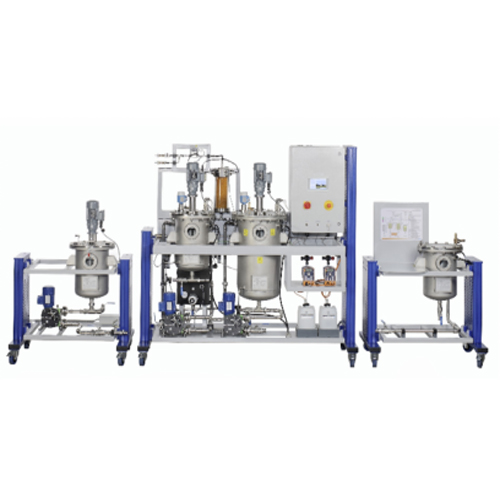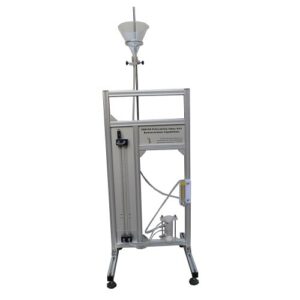ASS19-8-04 Biogas Plant Trainer Educational Equipment Fluids Engineering Experiment Equipment
1.Description
A biogas plant, microorganisms biologically degradate the organic starting substances (substrate) under exclusion of light and oxygen. The product of this anaerobic degradation is a gas mixture which primarily consists of methane. This gas mixture is called biogas.
The experimental plant Biogas plant serves to demonstrate the generation of biogas in a practical manner. The substrate is a suspension of shredded organic solids. It is hydrolysed and acidified in the first stirred tank reactor. Here, anaerobic microorganisms convert the long-chain organic substances into short-chain organic substances. The biogas forms in the second stirred tank reactor in the last step of the anaerobic degradation. It contains mainly methane and carbon dioxide. This two-stage method enables the ambient conditions to be adjusted and optimised in both reactors separately. The digestate is collected in a separate tank.
Temperature and pH value are controlled in both reactors. The resulting biogas is dried in a column. The column is filled with silica gel. Subsequently, the flow rate, humidity, methane content, carbon dioxide content and temperature of the biogas are measured. The system is controlled by means of a PLC which is operated via a touch screen. The measured values can be transmitted to a PC via USB and analysed with the software.
The experimental plant enables both a continuous and a discontinuous (batch) operation mode. Anaerobic biomass from a biogas plant is required for the experiments. E.g. potatoes or maize can be used to produce the substrate. An inert gas (e.g. carbon dioxide) is required to flush the experimental plant.
2.Specifications
1. two-stage biogas plant (continuous or discontinuous operation possible)
2. 2 stirred tank reactors made of stainless steel with capacitive level sensors
3. separate supply unit with substrate tank and feed pump
4. control of temperature and pH value in the reactors
5. 2 metering pumps for acid and caustic
6. heating water circuit with tank, heater, temperature controller and pump
7. biogas is dried with silica gel
8. biogas analysis: flow rate, methane content, carbon dioxide content, humidity and temperature
9. control of the experimental plant using a PLC, operated by touch screen
10. software for data acquisition via USB under Windows 8.1, 10
3.Technical data
-Tanks made of stainless steel
-reactor (stage 1): 26,3L
-reactor (stage 2): 73,5L
-substrate tank: approx. 30L
-digestate tank: 26,3L
Pumps
-3 peristaltic pumps: each max. 25L/h
-2 metering pumps: each max. 2.1L/h
-heating water pump: max. 480L/h
Stirring machines
-substrate tank: max. 200min-1
-reactors: each max. 120min-1
Measuring ranges
-methane content: 0-100%,
-carbon dioxide content: 0-100%
-flow rate: 0-30NL/h (biogas)
-pH value: 2x 1-14
-humidity: 0-100%
-temperature: 3x 0-100°C (reactors and biogas)
-400V, 50Hz, 3 phases
-400V, 60Hz, 3 phases; 230V, 60Hz, 3 phases
-UL/CSA optional
Dimensions and weight
-LxWxH: 1100x790x1400mm (supply unit)
-LxWxH: 2060x790x1910mm (trainer)
-LxWxH: 1100x790x1400mm (post-fermentation unit)
-Total weight: approx. 770kg
Accessories
-PC with Windows recommended
-1 packing unit of silica gel
-1 set of accessories
-1 software + USB cable
-1 set of instructional material











